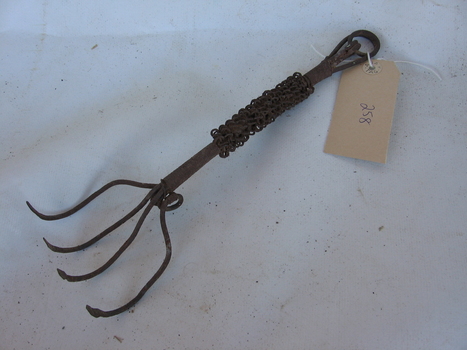Historical information
Hand cultivators like this were widely used in the 19th and early 20th centuries for small-scale gardening and farming.
They were commonly used for breaking up compacted soil, aerating roots, and pulling weeds.
This type of tool was often found in home gardens, farms, and market gardens, particularly before mechanized farming became widespread.
The hand-forged and chain-wrapped handle suggests it may have been custom-made or repaired over time.
The rusted patina and wear indicate extensive outdoor exposure, likely from long-term use in gardening or farming settings.
Physical description
This is a handheld gardening cultivator, used for loosening soil, removing weeds, or aerating garden beds.
It features four curved metal tines, which are slightly bent at the ends for digging and raking soil effectively.
The handle is metal, likely made from wrought iron or steel, and has a loop at the end, possibly for hanging storage.
A decorative chain-wrapped grip is attached around the handle, likely for added grip or reinforcement.
The tool shows significant signs of rust and wear, indicating age and long-term use.

